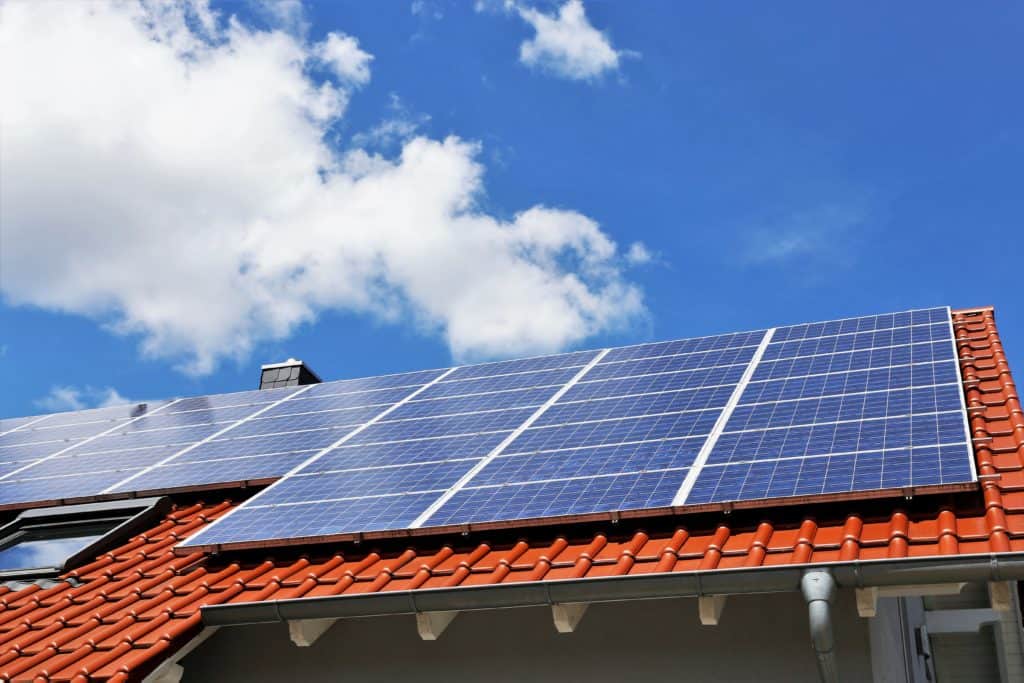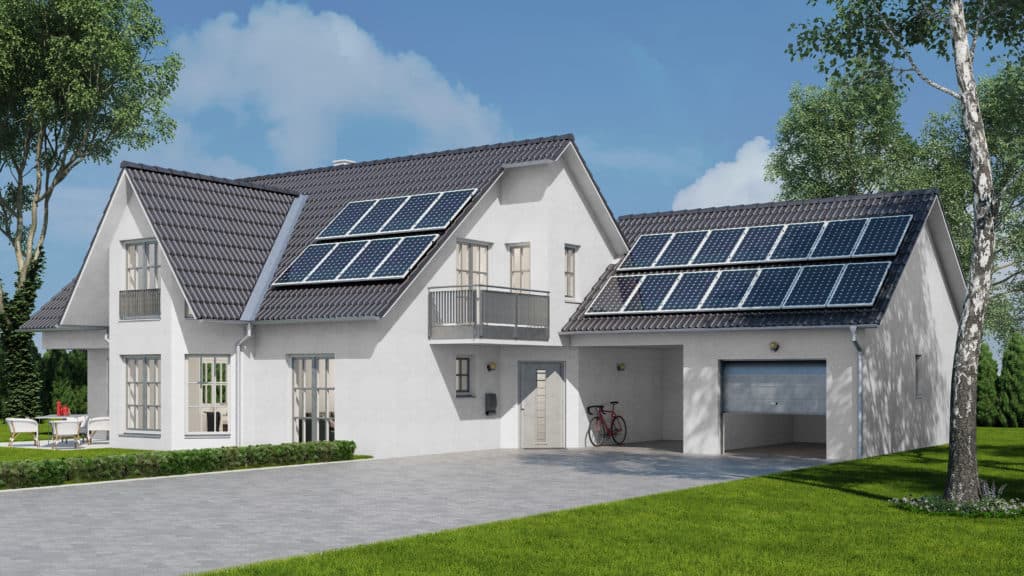
Solar Panels are a great renewable resource, but they can be somewhat hard to keep up with! If you’re wondering how to keep up with your panel, or just genuinely curious, you might wonder “can the sun’s changes affect solar panels? Do flares affect solar panels?”
Solar flares should have no affect on the panels themselves, however they can, and probably will, affect anything being powered by the flares. If you happen to have any inverters attached to your panel then they might shut off to prevent a power surge.
Solar panels are complicated, and understand exactly how it works might be difficult, but there are a few things that can help you understand a little better!
Important Vocabulary!
There are a number of terms we’re going to use, and as we don’t have a huge amount of time to go in-depth about each term, here are the few you’re going to have to know when understanding solar flares, and solar panels!
Electromagnetic- the interrelation of electric currents or fields and magnetic fields. These can be found in lightning and solar flares
Charge controllers- A charge controller, charge regulator, or battery regulator, limits the rate at which electric current is added to or drawn from electric batteries. It prevents overcharging and may protect against over-voltage, which can reduce battery performance or lifespan and may pose a safety risk
Inverter- A power inverter, or inverter, is a power electronic device or circuitry that changes direct current to alternating current.
Capacitor- a passive two-terminal electrical component used to store energy in an electric field.
Faraday- an enclosure used to block electromagnetic fields
EMP- An electromagnetic pulse, also sometimes called a transient electromagnetic disturbance, is a short burst of electromagnetic energy.
We will redefine some of these, but it’s important in knowing these particular phrases so that you can better keep up with what you’re reading!
What is a Solar Flare?
First, the basics, what’s a solar flare? How is going to affect my panel? Solar Flares are huge eruptions of energy from the sun’s surface and are considered to be the biggest explosions in our solar system. Electromagnetic waves can be found in solar flares, and this energy found within them can damage GPS, communications systems, solar power systems, radios, and other electronics.
Solar flares occur when a buildup of magnetic energy on the sun is suddenly released. They usually erupt from sunspots, temporary dark and relatively cool patches on our star’s surface where the local magnetic field is very strong. You can’t see solar flares from the earth, and you can’t even feel them. They’re something that just…occur, without us really knowing about them.

Solar flares occur randomly and aren’t something you can necessarily prep for. Solar flares can occur several times per day when the Sun is particularly “active” to less than one every week when the Sun is “dormant.” However large solar flares are even less common, with the last “big” one being November 2020.
The only people that truly know about solar flares, and how frequent they are, are scientists and solar panel-ists.
How Do They Affect Panels?
So if there is a solar flare, how is it going to affect the panels? The electromagnetic waves can cause damage to electronics. Specifically the wires they’re connected to. Solar panels have limited electronics that are stored within them which means they have a lower risk of damage when they’re not hooked up to other pieces. However, solar panels are usually connected with long wires to a bigger power system which means the wire can act as a large antenna to kill the panels.
The electronics are then damaged as a result of it. Now it’s important to note that damage does not happen often. As solar flares can happen daily, this doesn’t mean that you are constantly at risk of your panels breaking down. However on occasion, as we mentioned, there can be much larger solar flares that can cause damage. SO when it comes to preventing the damage, it isn’t really about long-term protection, but more about protection for that one big flare, and then rebuilding and prepping for the next one. It’s a constant job, that you have to look out for.
Inverters, or charge controllers, are important parts of the solar panel system. It stores solar energy into power! Unfortunately, if there’s a large wave of electromagnetic energy, these are the most commonly damaged thing! According to The Space Review, modern integrated circuits are about a million times more sensitive than electronics in the early 1960s.
There are some aspects of the solar grid that wouldn’t be affected. Battery banks, being one of them. As they have no circuitry on the inside. A solar flare can, however, damage the connecting wires as we mentioned earlier. The wires within power banks act as a receiver for signals brought by the solar panel. So if they’re damaged, there may be a reduction in functionality.
How Can I Prevent Damage to Solar Panels?
If you want to make sure this type of damage doesn’t happen to your solar panel, because lets be honest it’s already an expensive thing to keep up, there are a number of things you can do to prevent damage.
If you want to reduce the effects of a solar flare, you can spend a little extra money. Large mesh “Faraday” cages are a great addition to any solar panel to hold your charge controllers and inverters. These Faraday cages distribute the electromagnetic charge around the exterior and are used as a shield to protect anything in them! This means that the controllers and inverters, and anything else you can put in there, will stay safe! The only unfortunate item is that EMP signals can still fry the circuit within these pieces if they’re still plugged into the grid.

If the cage is not your cup of tea, you can also use an EMP-hardened solar power system. This type of system is used by professionals, the military, and businesses that regularly use solar power.
Solar panel-ing can be a brutal sport and for people dedicated to the craft, there’s only one generator that’s worth your time and money The Sol-Ark-12K All-In-One Solar Generator System‘s EMP Hardening. According to one blog post concerning generator systems for solar panels “This generator modeled after military designs that protect the system, solar panels, and your appliances while in use. It is actually (100Kv/M) EMP Hardened, which is twice that of military standards. After 8 months of rigorous testing, this hybrid inverter system has proven to withstand over 140 blasts of massive EMP shocks and protects the appliances plugged into it.”
One of the reasons that transformers and solar panels are vulnerable to damage is actually due to human error in attempting to protect solar panels from lightning strikes! The ground connections between the panel, and the transformers, dissipate power surges so that if a lightning strike were to occur, it wouldn’t damage anything.
Utility companies guard against severe weather areas by fitting critical transformers with capacitors. However, these capacitors can be thousands and thousands of dollars per transformer, meaning they aren’t as popular to install!

Thanks to modern-day technology, there is another way that you can prevent the possibility of your solar panel from getting damaged is through the National Weather Service’s Space Weather Prediction Center. This center can give about a 10 to 60 minutes warning of a strong storm or solar flare.
This isn’t a ton of time, however, it is enough time for utility companies to try and scale back power, or for you to take preventative measures and to avoid damage. However, this technology that we use consistently needs updating and replacements for this type of technology is scarce.
Being Prepared For Solar Flares
So if you happen to find out ahead of time a solar flare is about to occur, there are a few things you can do to prevent damage happening to your panels.
Turn down any power you may be using. If you happen to be off the grid, this may not be something that your local electricians may do for you. You can turn down the power on both your solar panel reception or any power you’re using within the home on your breaker. You can also go about attempting to unplug any connections.
Obviously, you can’t unplug everything, however, unplugging anything not absolutely needed. This will prevent any damage from happening to the inner wiring. This is the biggest concern for most solar panel holders and tends to be the most expensive to not only replace but also the most likely thing to be damaged.
You’ll also need to look into meshes or cages like we mentioned earlier. These will protect you if you aren’t able to be alerted ahead of time, as it’s uncommon for you to know a flare is going to occur.
Of course there are always things that are going to catch you off guard, and this won’t protect you from absolutely everything, however it’s a great start in making sure your (most likely pricey) solar panels don’t get damaged unbeknownst to you!